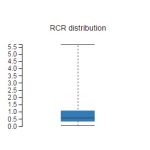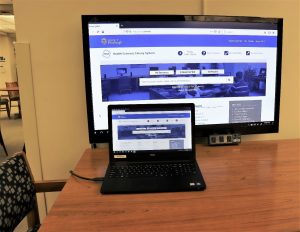Write Better and Get Published: Health Research Reporting Guidelines
Have you ever started working on a systematic review and someone told you to use the PRISMA guidelines? Or maybe you submitted an article to a journal and you were sent a CONSORT checklist? Or maybe you wanted to publish an article on your study and realized you weren’t quite sure how to organize your paper and what to include? Welcome to the world of health research reporting guidelines!
Even as clinical trial methodology became more structured, reporting on trials was still done on an ad hoc basis. Authors chose what to report; editors and reviewers determined if changes should be made and information added or removed, although there was no formal structure imposed on manuscripts. As a result, published medical studies frequently lacked vital methodology information such as recruitment techniques, participant eligibility criteria, measurable outcomes, length of the trial based on the protocol, time to follow-up, and drug dosages used. Continue reading
Assess Article Influence and Citation Data with NIH iCite
iCite, from the National Institutes of Health (NIH), is a powerful web-based tool that provides bibliometric information for journal articles included in PubMed. Users can analyze single or multiple articles via three modules:
1. Influence:

Delivers scientific influence metrics using the Relative Citation Ratio (RCR). Developed by the NIH, the RCR is a metric that represents the citations/year of a paper, normalized to the citations/year received by NIH-funded papers in the same field and year. For example, a paper with an RCR of 1.0 has the same number of citations/year as the median NIH-funded paper in its field, whereas a paper with an RCR of 2.0 has twice as many citations/year. For more information about how RCR is calculated, read these two articles by B. Ian Hutchins, “Relative Citation Ratio (RCR): A New Metric That Uses Citation Rates to Measure Influence at the Article Level” (2016) and “Additional Support for RCR: A Validated Article-level Measure of Scientific Influence” (2017). Continue reading
Updates to Falk Library’s Technology Spaces
As the Scaife Hall West Wing construction project continues, HSLS continues to focus on optimizing Falk Library’s evolving space for technology use.
 If you’re looking for a large-scale display to preview a presentation or to facilitate group work, you can find a wall-mounted screen with display mirroring capabilities on the library’s upper floor. Connect your laptop to the monitor with an HDMI cable, which can be borrowed from the Technology Help Desk with your Pitt ID. If your laptop doesn’t have an HDMI port, various display adapters are also available to borrow from the Technology Help Desk. In the coming weeks, more screens will be added throughout the library as temporary construction walls come down. Contact the Technology Help Desk with questions or for assistance connecting your laptop to the display. Continue reading
If you’re looking for a large-scale display to preview a presentation or to facilitate group work, you can find a wall-mounted screen with display mirroring capabilities on the library’s upper floor. Connect your laptop to the monitor with an HDMI cable, which can be borrowed from the Technology Help Desk with your Pitt ID. If your laptop doesn’t have an HDMI port, various display adapters are also available to borrow from the Technology Help Desk. In the coming weeks, more screens will be added throughout the library as temporary construction walls come down. Contact the Technology Help Desk with questions or for assistance connecting your laptop to the display. Continue reading
HSLS Staff News
The HSLS Staff News section includes recent HSLS presentations, publications, staff changes, staff promotions, degrees earned, etc.
Names in bold are HSLS-affiliated
News
Melissa Ratajeski, Coordinator of Data Services, has become a Certified Carpentries Instructor. The Carpentries project includes Software Carpentry, Data Carpentry, and Library Carpentry with the shared mission to teach foundational computational and data science skills to researchers.
Publications
J.A. Pruskowski, S. Springer, C.T. Thorpe, M. Klein-Fedyshin, Research and Clinical Instruction Librarian, et al., published “Does Deprescribing Improve Quality of Life? A Systematic Review of the Literature” in Drugs & Aging, December 2019, 36(12): 1097-1110.
N. Shaikh, V.A. Osio, C.B. Wessel, Head of Research Initiatives, et al., published “Prevalence of Asymptomatic Bacteriuria in Children: A Meta-Analysis” in The Journal of Pediatrics, November 28, 2019. Continue reading
Classes for January 2020
Single Cell RNA-Seq, Wednesday, January 8, 10 a.m.–3 p.m.
Painless PubMed, Thursday, January 9, 9–10 a.m.
Pitt Resources for Bioinformatics Data Analysis, Thursday, January 9, 12–1 p.m.
Basic EndNote, Monday, January 13, 10–11 a.m.
Pathway Enrichment Analysis–IPA & MetaCore, Wednesday, January 15, 10 a.m.–3 p.m.
Introduction to Tableau for Data Visualization, Thursday, January 16, 9–10 a.m.
Introduction to Data Management, Tuesday, January 21, 1–2 p.m.
Reporting Guidelines: Transparent Writing Equals Better Results, Thursday, January 23, 10:30–11 a.m.
Painless PubMed, Friday, January 24, 8:30–9:30 a.m.
Advanced EndNote, Monday, January 27, 10–11 a.m.
Advanced PowerPoint for Presentations, Tuesday, January 28, 1–3 p.m.
ChIP-Seq, Wednesday, January 29, 10 a.m.–3 p.m.
From Protocol to Publication: Selecting the Right Reporting Guideline for Your Paper, Study, or Article, Thursday, January 30, 12–1 p.m.

